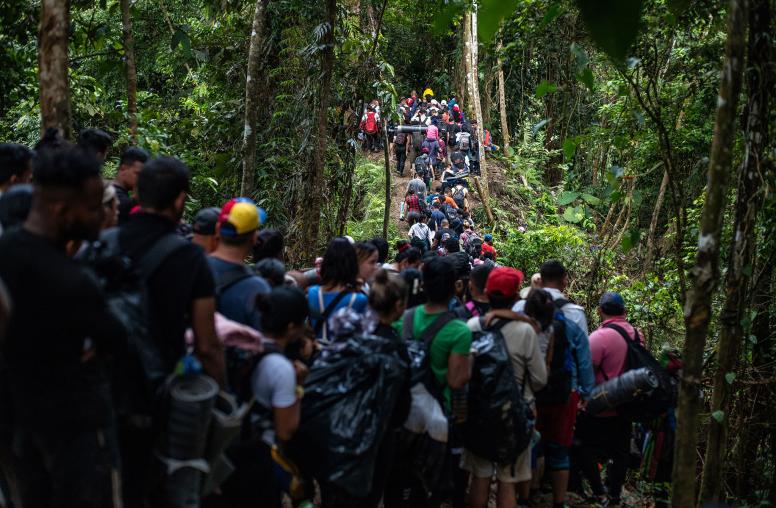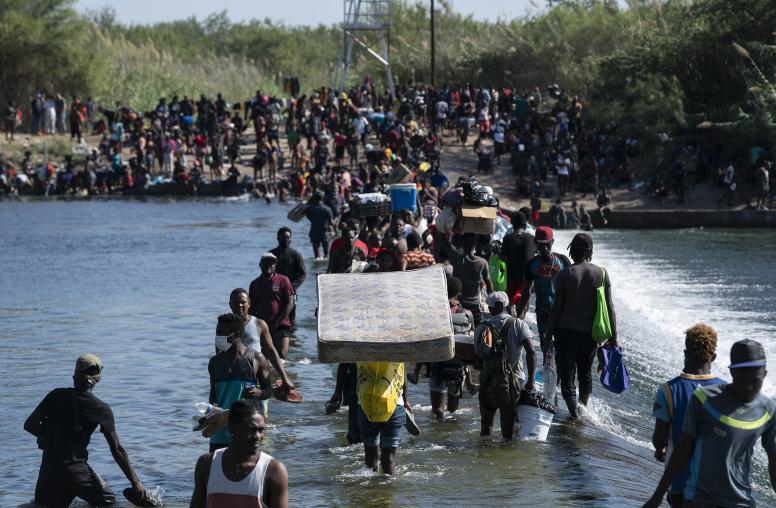To Improve Humanitarian Aid, Go Local
This month, the world's unprecedented refugee crisis, and the traumas of the greater Middle East that are fueling it, will dominate the United Nations' annual General Assembly session. World leaders will hold extraordinary meetings, including a White House-hosted Leaders' Summit on Refugees, to grapple with a web of violent conflicts, failed and fragile states, and the resulting humanitarian disaster of more than 60 million people worldwide living as refugees.

A vital test for these top-ranking crisis managers will be whether they act on the recommendations offered three months ago by the (first-ever) World Humanitarian Summit, held in Istanbul. At that conference, world leaders from governments, the United Nations, aid organizations, business and civil society gathered to rethink our world's overloaded humanitarian aid system. They agreed on a set of reforms, called the Grand Bargain, to improve the delivery, transparency and effectiveness of humanitarian aid.
This month's meetings at the United Nations will be a key first step in determining whether the insights from Istanbul can be turned into action. A key will be to decentralize aid and invest in local organizations.
In the humanitarian aid sector, local organizations remain underutilized. Governments and international institutions often leave them out of strategic planning and other discussions. Participants in the reformist Grand Bargain pledged to allocate at least 25 percent of funds to local organizations by 2020, a step that will decentralize aid and promote local ownership of projects.
But funds alone are insufficient. To empower local organizations to participate effectively in humanitarian assistance and interventions, the international community needs also to focus on building their capacity. And engaging them fully means not treating them as contractors, but including them in discussions and planning on reforming aid.
Local nongovernmental organizations (NGOs), faith-based organizations and other groups often have better knowledge of changing conditions on the ground and can design and implement humanitarian programs that are culturally sensitive and relevant to specific communities. Humanitarian assistance, like development work, is most effective when tailored to the needs of the beneficiaries.
Investing in the capacity of local organizations also can prevent future humanitarian crises by helping communities address the root causes of violence, prepare for natural disasters and support marginalized groups. Local organizations are best equipped for this role. Investment in such groups should focus on reducing their dependence on foreign aid. It should support long-term programming designed and implemented by these local partners to ensure sustainability after international agencies have left the country.
True international partnership also would reduce fears of financial misappropriation. Some have argued that redirecting funding to local organizations in the field elevates risk for corruption, mismanagement of funds and financing for extremist causes. Such risks can be managed and avoided through vetting of local partner institutions and improved monitoring and evaluation mechanisms.
And the risks do not all weigh against a bigger role for local organizations; international organizations themselves have been guilty of corruption and financial mismanagement to the detriment of beneficiary communities. Counterterrorism laws have blocked significant deliveries of essential aid, prolonging conflicts and deepening harm to the most vulnerable populations.
The longer local populations are maintained in survival mode, the smaller the chance of them becoming resilient later. As we invest in humanitarian aid, the question that needs to remain central at each step is what can be done now to plant the seeds of full recovery and social cohesion in societies that are in the midst of protracted, violent conflicts. Local communities often lack basic supplies and services, but they also need, and have repeatedly asked for, international aid that goes beyond food rations and blankets.
The failure to invest now in the future of entire societies would lead to greater problems and costs down the road. Supporting people's resilience now is not only a sound political strategy, it is a good economic investment that may save taxpayer money in the future while planting the seeds for long-term peace and stability.
Omar is associate vice president of the United States Institute of Peace's (USIP) Middle East and Africa Program.
This article was originally published on The Hill.

